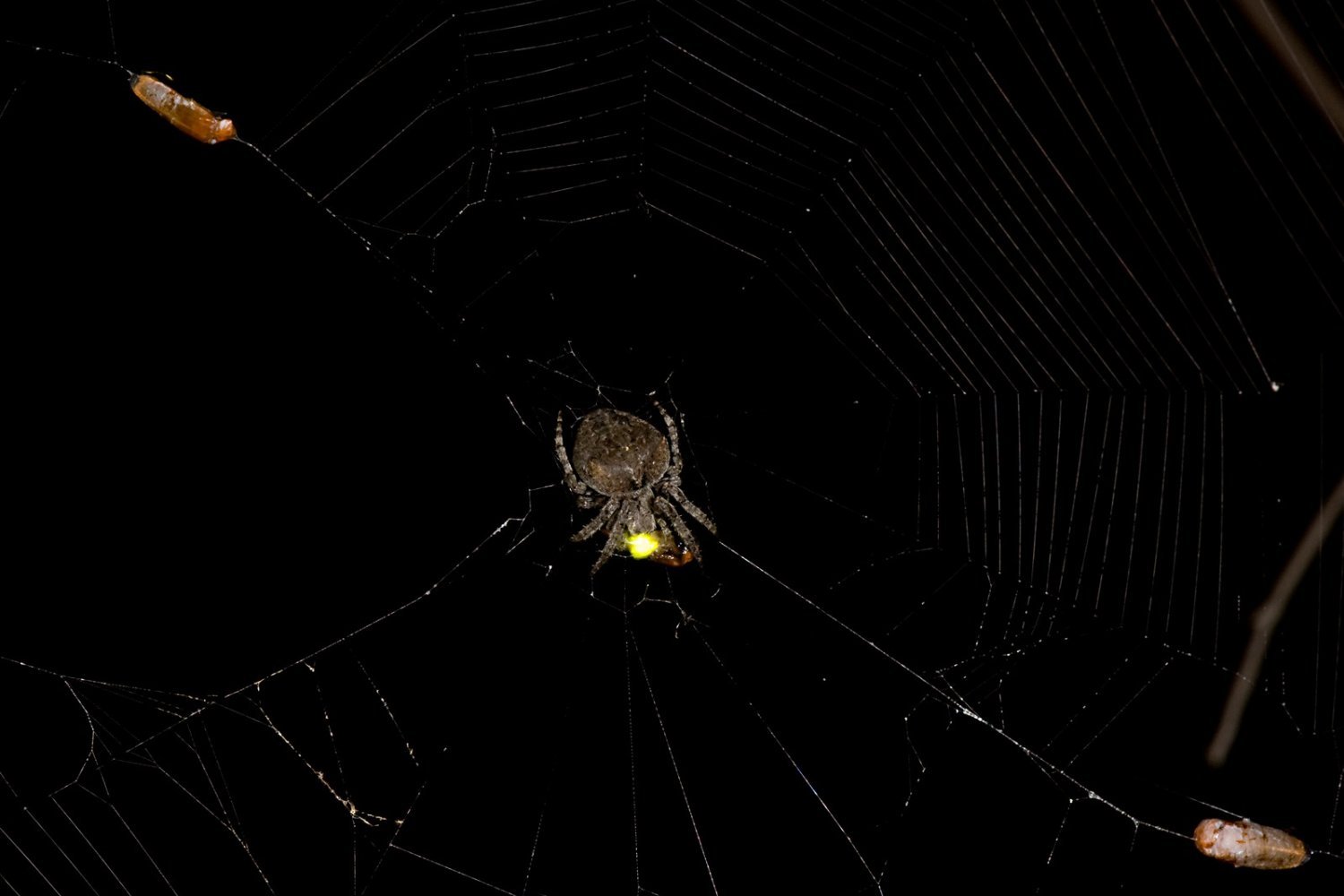Some spiders might be even more devious predators than we realized. New research published Monday finds that certain spiders can force trapped fireflies to emit light signals that bait other male fireflies looking for love. It’s an amazing finding, but scientists still aren’t sure exactly how the spiders pull off this trick.
Scientists from Huazhong Agricultural University and Hubei University in China led the study, aiming to confirm “extensive field observations” of Araneus ventricosus, a species of orb-weaving spider common throughout parts of eastern Asia. One of the scientists noticed that, when these spiders caught Abscondita terminalis fireflies in their web, the insects were almost always male. This distinction was possible because of the insects’ unique mating strategy, which leverages bioluminescent lanterns. A. terminalis males deploy multi-pulse flashes from their two lanterns to attract females, whereas females only have and use pulses from their single lantern to attract males.
The researchers hypothesized that the spiders were somehow intentionally luring A. terminalis males to their doom, possibly by manipulating the light signals emitted from the fireflies already trapped in their web. To test this hunch, the researchers conducted field experiments in which they closely observed webs made by the spiders that had already ensnared male A. terminalis fireflies.
“The results showed a significant impact: in the presence of the spider, more male fireflies were ensnared in its web,” researcher Daiqin Li, a behavioral ecologist at Hubei, told Gizmodo. These webs with the spiders present were also more likely to have male fireflies that emitted female-like light signals, using only a single lantern. The team’s findings were published on August 19 in the journal Current Biology.
Upon further investigation, the team found that the spiders seemed to know when their trapped prey was a male firefly, despite their limited eyesight. Once the arachnids noticed, they bit the insects repeatedly. The researchers hypothesized that the spiders were clued in by watching the fireflies’ light signals. To test this specific hypothesis, the team blackened out the lanterns of some fireflies using ink. When these blackened fireflies were captured by the web, the spiders didn’t bite them as they did before, appearing to confirm that the spiders rely on seeing the fireflies’ light to know when they’ve got a male ready for baiting others.
There are still some questions about this devious romantic mimicry that the researchers hope to figure out, such as whether it’s the spiders’ bite itself that forces fireflies to do their bidding or some ingredient in their venom.
“Several future directions for this research can be explored. First, the mechanism by which the spider manipulates the flash signals of ensnared male fireflies remains unknown. Second, the evolutionary origins of the prey-manipulation system in A. ventricosus are still unclear. While targeting fireflies as prey is not unique to this spider—numerous records document other spiders preying on fireflies—it would be valuable to investigate similar systems among other orb-web spiders and firefly-eating predators,” Li said. It’s also possible that spiders and other predators can deceive and manipulate their prey in still unexplored ways, such as by using sound or pheromones, he added.
Either way, the findings do further demonstrate the diverse array of clever and sometimes chilling tricks that many animals routinely use against each other to survive. For our sake, it’s good that these spiders are only interested in fooling and munching down on other invertebrates, not humans.











Leave a Reply